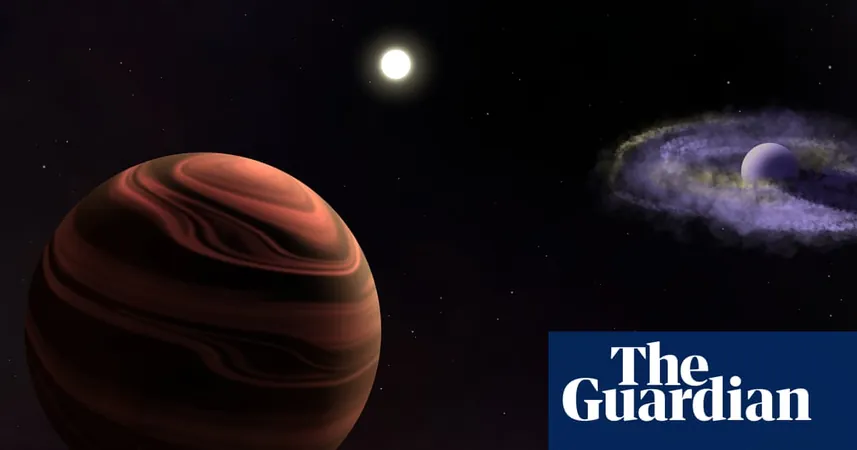
Astronomers Stunned by Mysterious High-Altitude Clouds on Young Planet
2025-06-10
Author: Mei
A Cosmic Weather Surprise Awaits!
Imagine venturing to a planet orbiting a sun-like star in the remote constellation of the fly. If such a trip were ever possible, keeping an eye on the bizarre weather patterns would be essential!
Recent observations made by the James Webb Space Telescope (JWST) have revealed thick, high-altitude clouds engulfing this newly discovered world, primarily composed of mineral dust that might even include iron. When these clouds break apart, they could unleash metallic rain on the surface below.
Unlocking the Secrets of a Young Star System
Situated 307 light years away, the star YSES-1 is a fascinating cosmic baby, just a mere 1 million years old compared to our sun’s 4.6 billion years. This star is surrounded by two colossal gas giants, both still in the process of formation and larger than our solar system's biggest planet, Jupiter.
Astrophysicist Dr. Kielan Hoch from the Space Telescope Science Institute highlights why this young planetary system offers a unique glimpse into the early evolution of celestial bodies. “There are only a handful of multiplanet systems that have been directly imaged, making them invaluable for testing planet formation theories,” she explained.
Twins in the Cosmos: A Rare Coincidence
In an unexpected twist, during their observations, astronomers captured both forming planets within the telescope's field of view. The outer planet, known as YSES-1c, is about six times the mass of Jupiter.
Instead of water vapor clouds like those on Earth, the JWST revealed that these clouds consist of magnesium silicate dust grains and potentially some iron. Hoch remarked, “The iron would indeed precipitate out, presenting a unique environmental condition.”
A Mysterious Disk and Formation Puzzles
For the first time, astronomers have directly detected these unusual clouds around a planet orbiting a sun-like star, with findings published in the prestigious journal Nature. In a striking revelation, they uncovered a massive disk of dust around the larger planet, YSES-1b, which holds nearly 14 times the mass of Jupiter.
Dr. Hoch pointed out that this ongoing disc is a conundrum for current formation theories, asking, “Why does YSES-1b retain material while YSES-1c does not?” Compounding the mystery, YSES-1b still has an extensive disk of material when theoretically, such dust should have settled long ago.
The Quest for Understanding Continues
Hoch expressed her intrigue: “We wouldn’t expect such diverse appearances from planets that formed in the same protoplanetary disk.” With the immense data being provided by JWST, astronomers aim to refine their existing models and deepen our understanding of how planets evolve amid the cosmos.


 Brasil (PT)
Brasil (PT)
 Canada (EN)
Canada (EN)
 Chile (ES)
Chile (ES)
 Česko (CS)
Česko (CS)
 대한민국 (KO)
대한민국 (KO)
 España (ES)
España (ES)
 France (FR)
France (FR)
 Hong Kong (EN)
Hong Kong (EN)
 Italia (IT)
Italia (IT)
 日本 (JA)
日本 (JA)
 Magyarország (HU)
Magyarország (HU)
 Norge (NO)
Norge (NO)
 Polska (PL)
Polska (PL)
 Schweiz (DE)
Schweiz (DE)
 Singapore (EN)
Singapore (EN)
 Sverige (SV)
Sverige (SV)
 Suomi (FI)
Suomi (FI)
 Türkiye (TR)
Türkiye (TR)
 الإمارات العربية المتحدة (AR)
الإمارات العربية المتحدة (AR)